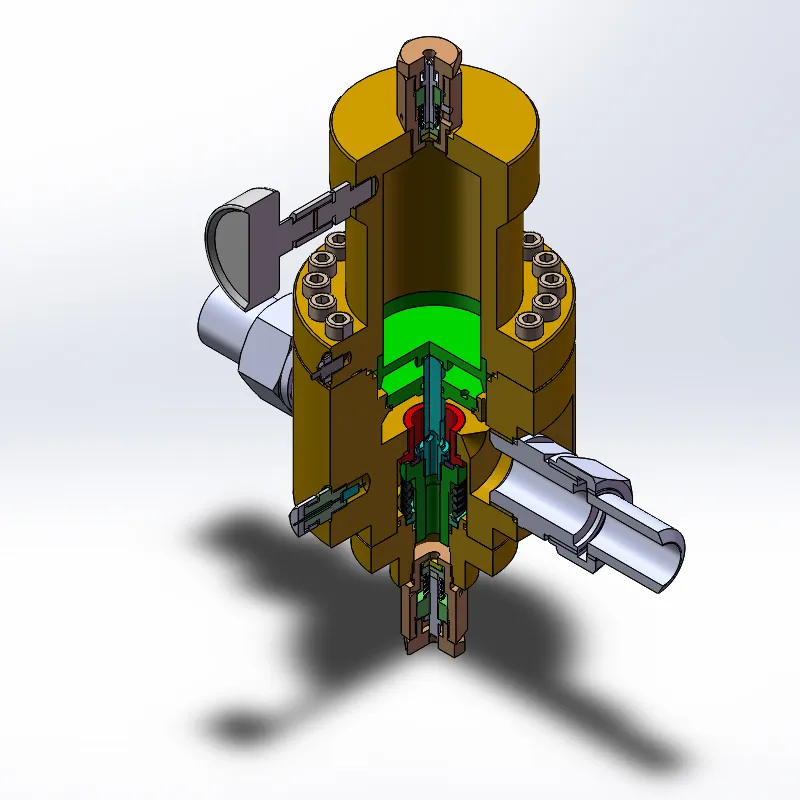
Nov . 05, 2024 18:36
Back to list
مخفض ضغط الغاز الطبيعي
Understanding Natural Gas Pressure Regulators
Natural gas is a vital energy source that powers homes, industries, and vehicles globally. However, to ensure its safe and efficient use, managing the pressure at which it is delivered is crucial. This is where the natural gas pressure regulator comes into play. In this article, we will explore the importance, functionality, types, and maintenance of natural gas pressure regulators.
What is a Natural Gas Pressure Regulator?
A natural gas pressure regulator is a mechanical device designed to control the pressure of gas flowing from the supply line to the end-user. Its primary function is to reduce high inlet pressure to a lower, safe level suitable for use in appliances, ensuring that the gas is delivered at a consistent and appropriate pressure.
Importance of Gas Pressure Regulation
Regulating gas pressure is essential for several reasons
1. Safety High pressure can lead to dangerous situations, including leaks or explosions. A regulator helps mitigate these risks by ensuring that the gas pressure is within safe limits. 2. Efficiency Appliances are designed to operate at specific pressures. A regulator maintains the pressure within optimal ranges, which enhances the performance and efficiency of gas-powered devices.
3. Compliance Many regions have regulations regarding gas pressure in residential and commercial settings. Using a regulator helps users comply with these legal standards.
How Does a Natural Gas Pressure Regulator Work?
Pressure regulators operate based on principles of hydraulics and mechanics. The device typically consists of a spring-loaded diaphragm that responds to changes in pressure. When gas enters the regulator, it pushes against the diaphragm. If the pressure exceeds the set limit, the diaphragm moves to close a valve, allowing less gas to flow. Conversely, if the pressure drops below the desired level, the diaphragm opens the valve to increase gas flow.
.
- Inlet side This is where high-pressure gas enters the regulator. - Outlet side This side delivers the regulated lower pressure gas to the appliances.
مخفض ضغط الغاز الطبيعي

Many regulators are adjustable, allowing for fine-tuning of the output pressure to suit specific requirements.
Types of Natural Gas Pressure Regulators
There are different types of pressure regulators, each designed for specific applications
1. First-Stage Regulators These are typically used in high-pressure systems where they reduce gas pressure for subsequent regulation. They prepare the gas for safe and efficient use.
2. Second-Stage Regulators These are used in residential and commercial appliances to further reduce the pressure coming from the first-stage regulator to a usable level.
3. Integrated Regulators These combine the functions of both first and second-stage regulators. They are often used in applications where space is limited.
4. Lock-up Regulators Designed to automatically stop the flow of gas in case of excessive pressure, enhancing safety measures.
Maintenance of Natural Gas Pressure Regulators
To ensure optimal performance and safety, regular maintenance of pressure regulators is essential
- Inspection Regularly check for leaks, corrosion, or any signs of wear. - Cleaning Dust and debris can affect the performance of the regulator. Keeping it clean will enhance its efficiency. - Testing Ensure that the regulator is performing correctly by testing the output pressure with a gauge.
In conclusion, natural gas pressure regulators are integral components of gas supply systems, ensuring safe and efficient gas delivery. Understanding their importance, operation, and maintenance can lead to better usage practices, ultimately contributing to safety and energy efficiency in gas consumption. By prioritizing regular maintenance and inspection, users can enjoy the benefits of natural gas while minimizing risks associated with improper pressure management.
Next:
Latest news
-
Safety Valve Spring-Loaded Design Overpressure ProtectionNewsJul.25,2025
-
Precision Voltage Regulator AC5 Accuracy Grade PerformanceNewsJul.25,2025
-
Natural Gas Pressure Regulating Skid Industrial Pipeline ApplicationsNewsJul.25,2025
-
Natural Gas Filter Stainless Steel Mesh Element DesignNewsJul.25,2025
-
Gas Pressure Regulator Valve Direct-Acting Spring-Loaded DesignNewsJul.25,2025
-
Decompression Equipment Multi-Stage Heat Exchange System DesignNewsJul.25,2025

